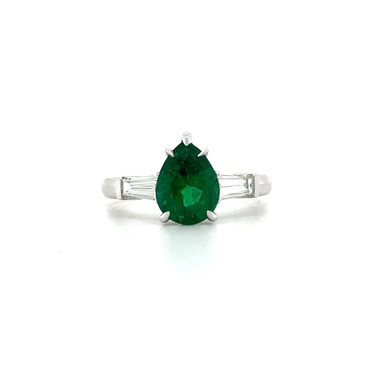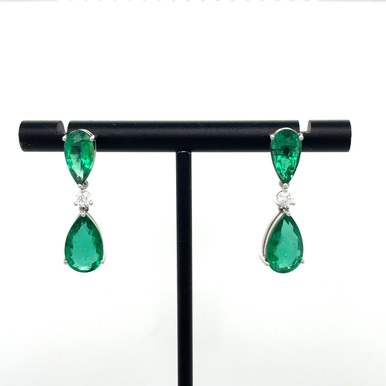An emerald is a dazzling gemstone known for its rich green hue and is a variety of the mineral beryl. Its vivid color is primarily due to trace amounts of chromium and sometimes vanadium within its crystal structure. The depth and intensity of the green can vary widely, making each emerald unique. Historically, emeralds have been prized for their beauty and have held significant cultural and symbolic meanings, often associated with immortality, rejuvenation, and fertility.
Emeralds are formed under specific geological conditions, typically in hydrothermal veins or in metamorphic rocks. The finest quality emeralds are often found in countries like Colombia, Brazil, and Zambia. Colombian emeralds, in particular, are celebrated for their exceptional quality and deep green color. The mining and extraction of these gemstones can be a labor-intensive process, as they are often embedded deep within rock formations and require careful and skilled extraction techniques to prevent damage.
In addition to their aesthetic appeal, emeralds have a notable place in history and lore. They were highly valued by ancient civilizations such as the Egyptians, who believed the stone symbolized rebirth and used it in burial ceremonies. Emeralds were also cherished by the Incas and Aztecs of South America. In more recent times, emeralds have become a popular choice for fine jewelry, including engagement rings, necklaces, and earrings, often set in gold or platinum to accentuate their natural beauty. The allure of emeralds continues to captivate people around the world, making them a timeless and treasured gemstone.
How do I care for an Emerald?
Emeralds, with their vibrant green hue and captivating sparkle, have long been cherished as one of the most precious gemstones. When set in a ring, they can be a stunning addition to any jewelry collection. However, emeralds are not as hardy as some other gemstones, such as diamonds or sapphires, and require special care to maintain their beauty and integrity over time.
Firstly, it's important to understand that emeralds are relatively softer stones, ranking between 7.5 and 8 on the Mohs scale of hardness. This means they can be more susceptible to scratches, chips, and other damage compared to harder gemstones. Therefore, when wearing an emerald ring, it's advisable to avoid activities that might subject it to rough or abrasive conditions. For example, one should remove the ring before engaging in gardening, cleaning, exercise, or any task that might involve significant handwork. Additionally, to prevent accidental knocks or impacts, it's best to store the emerald ring separately in a soft pouch or a lined jewelry box when not in use.
In terms of care, emeralds often contain natural inclusions and fractures, which are sometimes filled with oils or resins to enhance their appearance. These treatments can be affected by exposure to heat, chemicals, and ultrasonic cleaners. To clean an emerald ring, avoid harsh chemicals and opt for a gentle approach. Use lukewarm water, mild soap, and a soft brush to gently clean the gemstone. Rinse thoroughly and pat dry with a soft cloth. It's also wise to periodically have the ring inspected by a professional jeweler, who can check for any signs of damage or wear and perform any necessary maintenance, such as re-oiling the stone if needed.
In summary, while emerald rings are exquisite, they do require mindful handling and regular care to keep them looking their best. By avoiding harsh conditions, cleaning gently, and seeking professional maintenance, you can enjoy the beauty of your emerald ring for many years to come.


